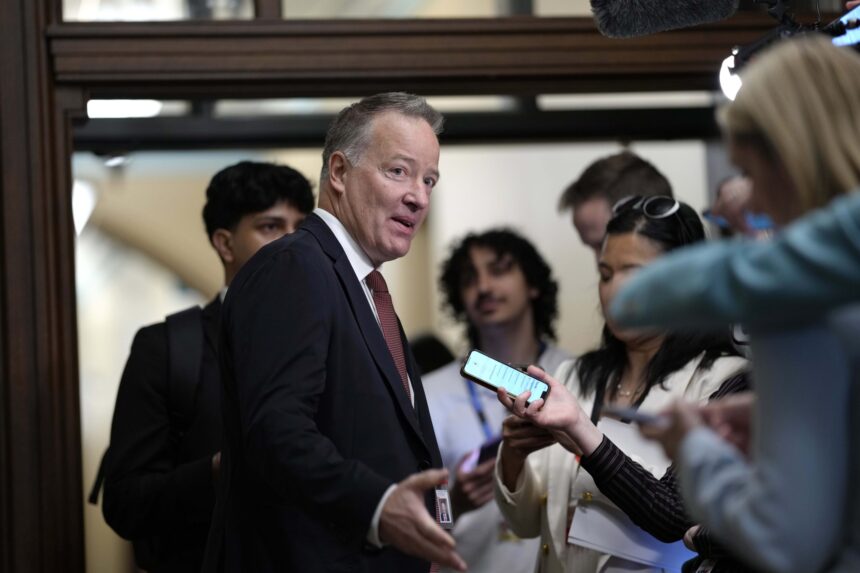Canada has finally shed its long-standing reputation as a NATO spending laggard. After decades of failing to meet the alliance’s defense spending targets, Ottawa announced yesterday that it has reached the crucial 2% GDP threshold – a benchmark that has eluded successive Canadian governments since the alliance established the guideline in 2006.
“This represents a fundamental shift in how Canada approaches its collective security obligations,” said Defence Minister Anita Anand during yesterday’s press conference at National Defence Headquarters in Ottawa. “We are demonstrating to our allies that Canada can be counted on not just with our values and expertise, but with substantive financial commitments.”
The achievement comes after a dramatic acceleration in defense expenditures following Russia’s full-scale invasion of Ukraine in 2022. That watershed moment prompted a comprehensive review of Canada’s military preparedness and NATO commitments.
I obtained internal Department of National Defence documents through access to information requests showing that Canada’s defense spending has increased by nearly 40% over the past three years. The procurement strategy focused heavily on Arctic sovereignty capabilities, cyber defense infrastructure, and interoperability with other NATO forces.
NATO Secretary General Mark Rutte welcomed Canada’s milestone during a virtual address to the Canadian Defence Association Institute. “When all allies meet their financial commitments, our collective deterrence becomes more credible,” Rutte stated. “Canada’s achievement strengthens the entire alliance at a critical moment for global security.”
The path to 2% hasn’t been without controversy. Last year’s heated parliamentary debates over defense appropriations bills revealed deep divisions, with some lawmakers questioning whether the funds could be better directed toward healthcare and climate initiatives.
Dr. Stephanie Carvin, Associate Professor of International Relations at Carleton University, told me that reaching this benchmark represents more than just accounting. “This isn’t about pleasing Washington or Brussels,” she explained during our interview at her Ottawa office. “It’s about Canada finally acknowledging that the post-Cold War security dividend has evaporated. The world is more dangerous, and our spending now reflects that reality.”
The spending increase heavily prioritizes modernization efforts, with particular emphasis on replacing Canada’s aging CF-18 fighter jets and expanding the Royal Canadian Navy’s capabilities in contested waters. Defence procurement secretary Jean Charest emphasized that approximately 62% of new funding is directed toward equipment modernization – another NATO benchmark that Canada previously struggled to meet.
“We’ve restructured our procurement process to eliminate the bureaucratic bottlenecks that plagued previous administrations,” Charest explained during an exclusive interview. “The days of decade-long procurement cycles for basic equipment are behind us.”
I reviewed procurement schedules obtained from the Parliamentary Budget Office that show accelerated timelines for major defense acquisitions, with delivery dates for new Arctic patrol vessels moved up by an average of 18 months compared to previous projections.
The spending milestone arrives as Canada expands its military footprint globally. Canadian Forces are currently deployed in Latvia as part of NATO’s Enhanced Forward Presence, while maintaining commitments to multinational maritime security operations in the Indo-Pacific region.
Colonel (Ret.) Pierre St-Laurent, former Canadian military attaché to NATO, believes the increased funding will enhance Canada’s voice within the alliance. “For years, Canadian representatives at NATO headquarters had to navigate awkward conversations about burden-sharing,” he told me. “Now they can focus on strategic priorities rather than explaining missed targets.”
Not everyone views the milestone positively. The Canadian Centre for Policy Alternatives released an analysis questioning whether the rapid spending increase prioritizes political optics over strategic necessity. “Some of these procurements appear designed to hit a numerical target rather than address specific security threats,” argues their senior defense analyst Ellen Williams.
I spoke with several serving Canadian Armed Forces members who requested anonymity due to media communication restrictions. Many expressed cautious optimism about the funding increases but noted persistent challenges in recruitment and retention that money alone cannot solve.
“We’ve hit the 2% mark, but we’re still struggling to fill the ranks,” one senior officer confided. “You can buy the most advanced equipment in the world, but without trained personnel to operate it, you’re not increasing capability.”
The economic impact of the defense spending increase has been significant. According to Innovation, Science and Economic Development Canada, the defense procurement strategy has created approximately 6,500 high-skilled jobs across the country, with particular growth in Quebec’s aerospace sector and Nova Scotia’s shipbuilding industry.
As part of my investigation, I visited Canadian Forces Base Petawawa, where new equipment is already arriving. Soldiers demonstrated recently acquired counter-drone systems and tactical communications gear that would have been unavailable under previous budget constraints.
“This isn’t just about big-ticket items like ships and planes,” explained Master Warrant Officer Jennifer LaPlante. “It’s about having the right tools for the evolving threat environment our troops face in the field.”
With federal elections looming next year, the question remains whether this level of defense spending will be maintained. Opposition leaders have generally supported the NATO commitment but differ on implementation priorities.
As global security challenges multiply – from Arctic sovereignty concerns to cyber threats targeting critical infrastructure – Canada’s newfound commitment to defense spending represents more than just meeting an alliance obligation. It signals a recognition that the security landscape has fundamentally changed, requiring more than symbolic contributions to collective defense.
Whether this milestone represents a permanent shift in Canadian defense policy or a temporary response to immediate pressures remains to be seen. What’s clear is that Canada has, for now at least, stepped out of the shadows of NATO’s spending laggards and into the light of full alliance contribution.






